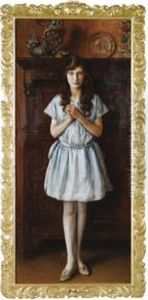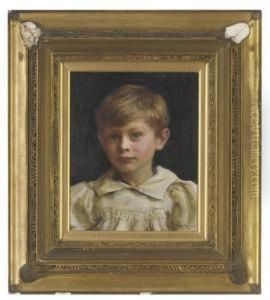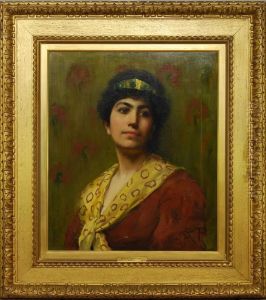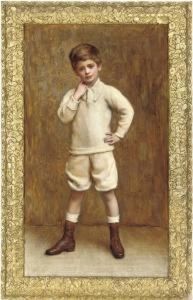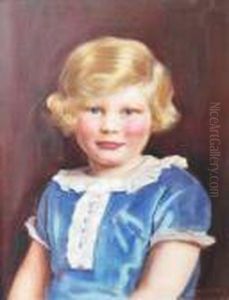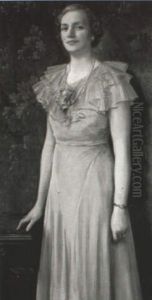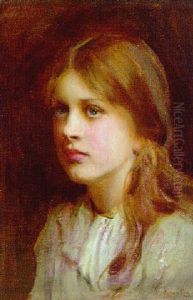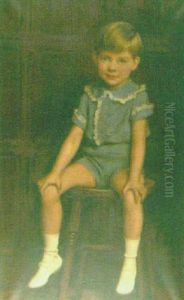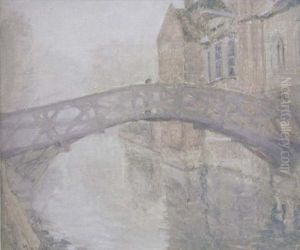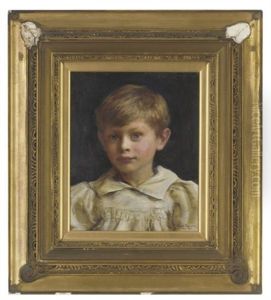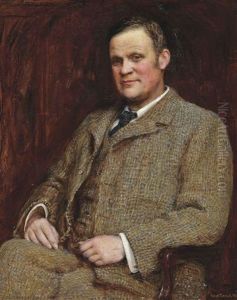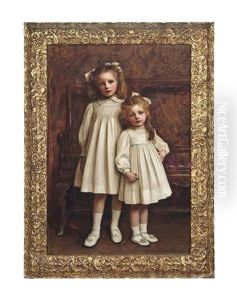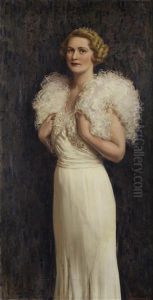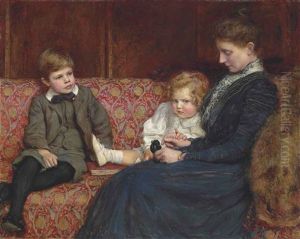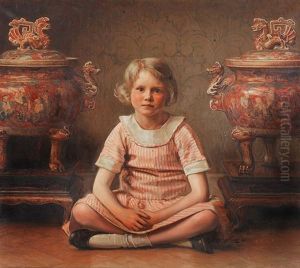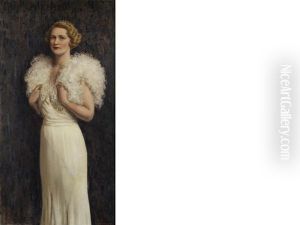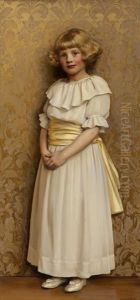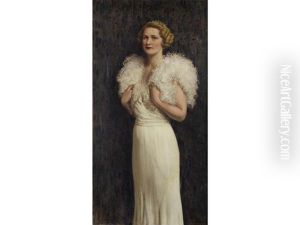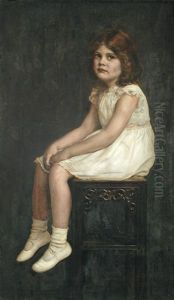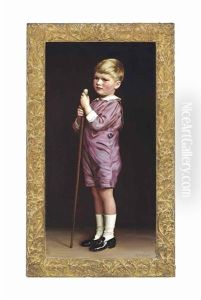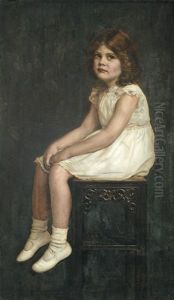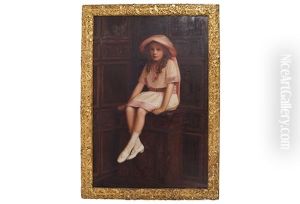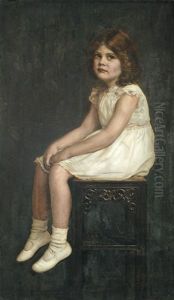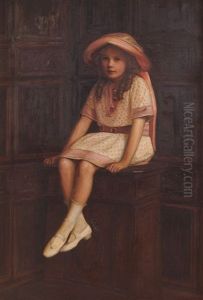Ralph Peacock Paintings
Ralph Peacock was an English painter who is known for his portraits, genre scenes, and history paintings. Born on October 14, 1868, in London, England, Peacock demonstrated an early talent for art which led him to study at the South Kensington Art Schools. He continued his education at the Royal Academy Schools, where he was a student from 1887 to 1890. During his time at the Royal Academy, he won several awards and scholarships, which underscored his potential as a painter.
Peacock's style was heavily influenced by the aesthetic movement and the Pre-Raphaelite Brotherhood, which was characterized by its attention to detail, vibrant colors, and complex compositions. His work often featured women and children and was marked by a sense of elegance and grace. One of his most notable paintings is 'The Sisters', which showcases his skill in capturing the subtleties of emotion and the interplay of light and shade.
Throughout his career, Peacock exhibited at various prestigious institutions, including the Royal Academy of Arts and the Paris Salon. His reputation was that of a meticulous craftsman with a penchant for realism and a dedication to capturing the essence of his subjects. Despite the changing artistic trends of the early 20th century, Peacock continued to work in a style that remained true to his classical training and influences.
Peacock's contributions to art extended beyond his own practice. He was also a teacher, sharing his knowledge and techniques with a new generation of artists. Throughout his life, he remained an active member of the artistic community, involved in various art organizations and societies.
Ralph Peacock's career was somewhat overshadowed by the innovations of modernism, which surged in popularity as he grew older. Nevertheless, he maintained a modest level of success and his works continued to be appreciated by those with a taste for traditional portraiture and academic painting. He passed away on December 1, 1946, leaving behind a body of work that, while perhaps not as widely recognized today, represents an important facet of late 19th and early 20th-century British art.
